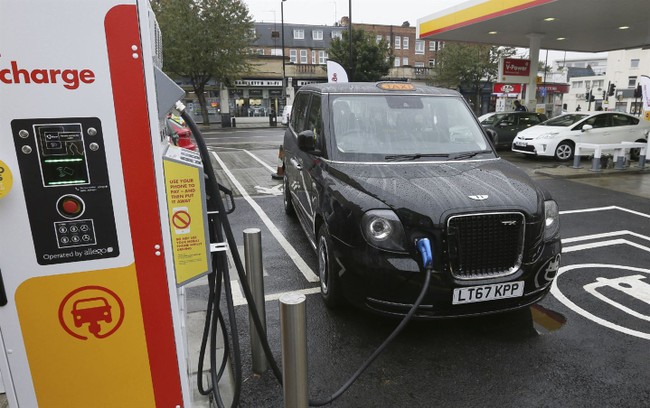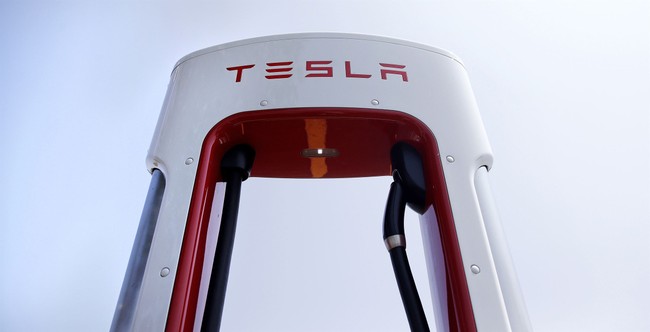For far too long, we have been enduring persistent lobbying from the left concerning the majesty and Eath-saving benefits of electric vehicles. That politicians and the heft of the federal bureaucracy are pushing this on the nation is all that is needed to understand this is a costly boondoggle. It has been a particularly hard push from Joe Biden, the man enamored with train travel, as Amtrak has been dependably soaking the government annually to cover billions in losses.
The collective effort to force us onto the electrical grid has been pervasive. Automakers have been crafting EVs for decades, blue states pass laws trying to force our hands into buying overpriced battery-op cars, and pro-plug-in politicians attempt to fabricate demand by pushing out government-backed rebates like showroom coupons. All of these examples hint at inherent problems with EVs. Another factor with this topic is common sense.
The main reason given for moving us onto EVs is the environmental benefits, but we need to ignore that the so-called “clean” vehicles need to have batteries charged with “dirty” power. Then you have California which wants to mandate that only EVs be sold in the coming years, a state that regularly has rolling blackouts and has requested residents refrain from charging their cars during peak periods. Surely moving all residents to charging in the garage will alleviate the problem!
One of the issues involving EVs is that the politicians who are vested in the cause (and often invested as well) have easily dismissed the uncomfortable realities surrounding the electrical lobbying efforts. Common sense and hints of contradictions are things politicians are adept at sidestepping when it comes to a pet cause. What is needed is hard data and solid proof showing the farce of their claims. Recently we have seen mounting evidence of this push losing power, as it were.
Jennifer Granholm recently had a PR disaster when she attempted to execute a cross-county all-EV road trip - that required a gas-powered support team shadowing her movements. There was the exciting news of an EV battery plant opening up in Kansas, we were just supposed to overlook that it required so much energy that a coal-supplied electrical plant was being recommissioned to serve the dedicated needs of this new “green” facility. We also had news that despite government contracts a company producing EV busses for municipal commuting was filing for bankruptcy.

Now more hard data arrives. A new study from the Texas Public Policy Foundation has come out laying out many of the flaws in this EV push, primarily that all of the promises are complete garbage. The claims of this transition leading to greener transportation (already shown to be a lie) are joined by the claims that it is also a net savings for drivers – something shown now to also be a lie. It has been measured that the true cost of driving EVs can become the equivalent of $17 per gallon.
This study, unsurprisingly, has been met with criticism as being backed by poro-fossil fuel interests. This is seen as a true shoot-the-messenger rebuttal as there is little in the way of contesting findings. One such EV expert has a thread allegedly debunking this study, and he begins by declaring he has not actually looked into the data; he simply “expects” that they are incorrect.
To be honest I haven't checked most sums. I expect there is plenty wrong there as well because science and objectivity doesn't seem to be a priority in this "study" that attempts to make EVs seem as expensive as possible.
— AukeHoekstra (@AukeHoekstra) October 28, 2023
But the main problem is how short sighted it is.
One sure way to see that this EV transition is not going to happen organically but only through sheer federal force is to see what is needed to compel people to buy electric autos. The average price of the ten most popular EV models is well north of $50,000; All-electric SUVs settle in above $60,000, and the EV truck market rests above $70,000. And the cost of used EVs does not dip appreciably. Those average out to about $40,000, which means you are taking on a used battery with a shorter lifespan and, depending on the model, you’ll soon be facing a replacement cost that will be in the thousands of dollars.
Now understand these prices should, in fact, be higher. The car companies have been propped up by government subsidies to make more EV models. On top of prior efforts to nudge (or, more appropriately, shove) automakers into creating EV nameplates, recently a new federal spending effort will hand out an additional $12 billion to the corporations. Then there is the pledge to spend billions more to create a charging station network. In addition to that, the government is doling thousands to each buyer to apply towards the purchase of EVs – up to $7,500. This is a completely fabricated marketplace.
And we as taxpayers are shelling out huge sums for these vehicles that the consumer is shunning. Ford Motor Company is looking very critically at its electric divisions, given that while the company is performing well overall its EV segment has already lost more than $9 billion over the first three quarters this year. Ford is severely scaling back its EV investments amid dwindling interest. Honda and General Motors just killed a planned $5 billion EV partnership. The car rental giant Hertz is cutting back its EV exposure due to the realities of these vehicles, currently sitting with a fleet of less than half its promised numbers by the end of last year.
Overall the automakers are sitting on a surplus of unsold EVs. So why are these companies continuing down this road as the power is being drained from this market?

The answer to this could be found deep in that report from the Texas Public Policy Foundation. Concerning the company considered to be the most successful in the EV economy - Tesla - we see a revealing detail regarding the tax credits offered to the automakers to inspire more EV production. While it states that Elon Musk opposes the credits for autos produced, he is perfectly at ease cashing in on another federal incentive program.
Musk never criticizes federal federal regulatory credits, which added $1.78 billion to Tesla’s 2022 revenue and have been a major, if not primary, driver of the company’s profitability.
This is the ludicrous secondary marketplace that the green energy boon has produced, where a company can purchase its way to “green production” by paying out to other companies for their carbon credits. Tesla acquires the credits because it produces so many EV products, and then it sells off its green commodities. The sham is explained thusly:
Tesla has been selling carbon credits to other automakers. In 2019, the company made headlines when it reportedly earned $357 million from the sale of carbon credits to other car companies that did not meet emissions standards set by the California Air Resources Board. This allowed these companies to comply with regulations without having to make significant changes to their own operations.
This is on par with the Renewable Energy Credits chicanery, where a company can pay a municipality to tout it is powered by green energy. The trick is that while a small percentage of the energy in a power grid is derived from wind or solar, the company pays to claim impossibly that the green power is diverted to its business. Basically, the government has set up a scam of “energy indulgences”.
We are fast approaching a moment when all of this postured earnestness to save the planet becomes unraveled by the very real prospect that so much of the effort is rooted in deception. Building up a false EV marketplace to appear as if we care while actually not making a difference – aside from costing us a fortune – is no way to convince the public this is a needed solution.














Join the conversation as a VIP Member